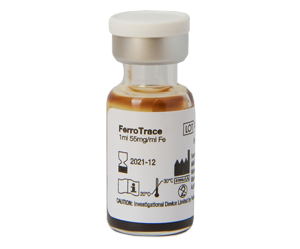When to use FerroTrace®?
Potential application before, during and after surgery
- Radiologists – use MRI to identify and assess high-risk nodes
- Surgeons – use MRI for pre-surgical planning prior to surgery or guiding laparoscopic nodal sampling during endoscopic procedures
- Radiation Oncologists – use MRI to identify high-risk nodes for radiotherapy planning
- Pathologists – use a magnetometer to identify high-risk nodes containing FerroTrace®
FerroTrace® takes the same path through the lymphatic system as metastasising cancer cells and is designed to be retained in the first draining lymph nodes − the high-risk lymph nodes. It is designed to enable highly accurate detection of affected lymph nodes.







